One of the behaviors pet ducks that pique the interest of many people is their tail wagging.
Why does duck tail wagging mean?
Ducks wag their tails as a form of communication and expression. It’s often a sign of happiness, excitement, or contentment. For instance, a duck may wag its tail after being fed, signaling that it’s satisfied. Ducks might also wag their tails to shake off water or to realign their feathers after preening. Sometimes, tail-wagging could be a mating display or a sign of agitation. As with many animal behaviors, context is key to interpreting what a tail wag might mean.
Key takeaways:
Ducks wag their tails for a variety of reasons, not just as an expression of happiness or contentment as often assumed.
Not all ducks wag their tails. While it’s common in domestic duck breeds, wild ducks typically only wag their tails as part of a mating and courtship ritual, or following an encounter with a stressful situation.
All ducks have tails, but they vary in shape, length, and prominence among different breeds. For example, male mallards have a distinctive upward curl, while breeds like northern pintails and long-tailed ducks have the longest tails.
It’s important to avoid attributing human emotions to ducks. While certain behaviors such as quacking, feeding well, and positive interaction with other ducks may indicate that a duck is content, it’s impossible to definitively tell what a duck is feeling, unlike when a dog wags its tail.
Why Do Ducks Wag Their Tails?
Excitement
Tail wagging can indicate a rise in excitement levels, such as after human interaction or being provided with food. This is especially seen in domestic excited ducks.
Cooling Off
After a period of intense activity or stress, ducks may use tail wagging as a self-soothing mechanism to calm down.
Illness
Excessive tail wagging may be a sign of a condition known as ‘wet feather’, which can occur if a duck’s feathers haven’t had a chance to dry off sufficiently.
Mating
Tail wagging is a common element of male ducks’ courtship behavior, aimed at attracting a mate. Occasionally, female ducks may wag their tails in response.
Shaking Off Water
After a swim, ducks shake their tails to shake off any water that has collected in their rear feathers.
Waddling
The clumsy, ducks waddle walk, a clumsy swaying motion, naturally involves some tail wagging, which helps them keep their balance.
Ducks are known for their unique behaviors, including their tail wagging. Many people wonder why ducks wag their tails. There are several reasons why ducks wag their tails, including mating rituals, communication and body language, expressing happiness and excitement, self-soothing and calming down, and defending against predators.
Mating Rituals
Male ducks wag their tails during their mating ritual. This tail wagging ritual is how a ducks flirt, its their way to attract a mate and show off their feathers. The tail wagging is often accompanied by head pumping, wing-flapping, and quacking.
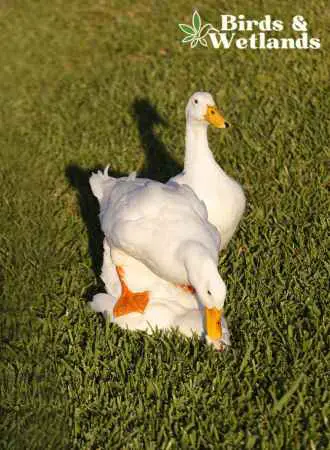
Communication and Body Language
Ducks use wagging their tails as a way to communicate with other ducks. When a duck wags its tail back and forth, it is usually trying to send a message to another duck. They also use their tails as part of their body language, bobbing their heads and waddling side to side to express affection or fear.
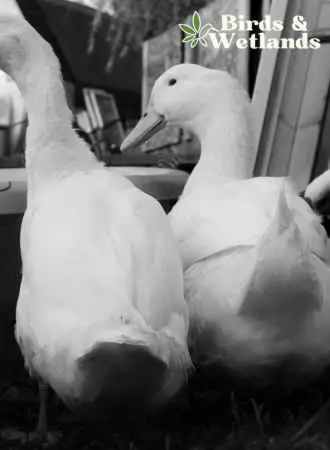
Expressing Happiness and Excitement
Ducks wag their tails when they are in a happy mood and excited. They may also head-pump and bob their heads side to side to express their joy.
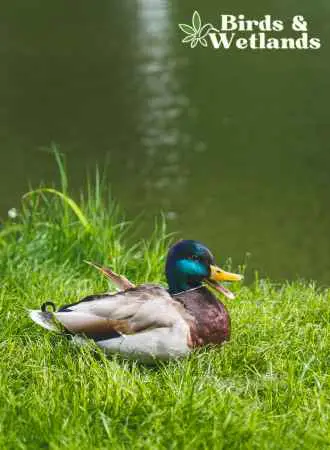
Self-Soothing and Calming Down
Ducks may also wag their tails as a way to self-soothe and calm down. This behavior is often seen in stressful situations, such as when they are wet or in danger.
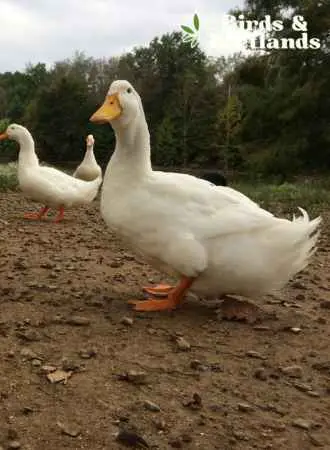
Defending Against Predators
Ducks may also wag their tails to defend themselves against predators. This behavior is often seen in wild ducks, who use wagging their tails to to counterbalance and escape from predators.

Do All Ducks Wag Their Tails?
Ducks are known for their distinctive waddling gait and quacking sound. But did you know that ducks also wag their tails? While tail wagging is a common behavior among ducks, not all ducks wag their tails. In this section, we will explore which types of ducks wag their tails, and the reasons why some ducks don’t wag their tails.

Types of Ducks That Wag Their Tails
All duck species have the ability to wag their tails, but some species are more likely to do so than others. Domesticated ducks, which are raised by humans for their eggs, meat, or as pets, are more likely to wag their tails than wild ducks. Domesticated ducks have been bred for specific traits, including friendliness and sociability, which may make them more likely to wag their tails when they see humans or other ducks.
Some duck breeds are also more likely to wag their tails than others. For example, the Indian Runner duck breed is known for its distinctive upright posture and tail-wagging behavior. Other duck breeds that are known to wag their tails include the Khaki Campbell, the Welsh Harlequin, and the Swedish Blue.
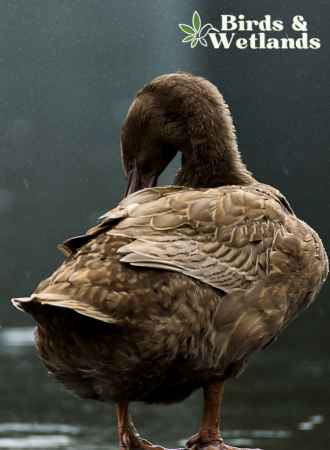
Reasons Why Some Ducks Don’t Wag Their Tails
Not all ducks wag their tails, and there are several reasons why this might be the case. Some ducks may be too stressed or anxious to wag their tails, while others may not feel comfortable around humans or other ducks. Wild ducks are also less likely to wag their tails than domesticated ducks, as they are less accustomed to human interaction.
Another reason why some ducks don’t wag their tails is that they may not need to. Tail wagging is a behavior that serves several purposes, including communication, attracting mates, and shaking off excess water off after swimming. Some ducks may not need to wag their tails as frequently as others, depending on their environment and lifestyle.
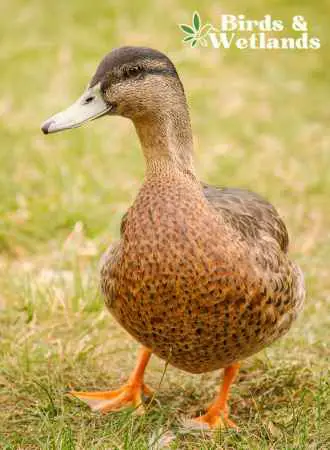
The Importance of Tail Wagging in Duck Behavior
Ducks are social creatures and use a variety of behaviors to communicate with each other. One such behavior is tail wagging, which can convey different messages depending on the context. In this section, we will explore the importance of tail wagging in duck behavior.
Tail Wagging and Bonding
Ducks are social animals that form strong bonds with other ducks. Tail wagging is one way that the ducks love to communicate with each other and strengthen these bonds. When ducks are happy and content, they will often wag their tails as a sign of affection and camaraderie with pet duck together.
Ducks also use tail wagging to communicate with their human caretakers. Domesticated ducks are known to wag their tails when they are happy and content, which can be a sign that they trust and enjoy the company of their duck owners.
Tail Wagging and Courtship
Tail wagging is also an important behavior during courtship rituals. Male ducks will wag their tails as the ducks walk past femalesas part of their mating display, which is intended to attract a female duck to mate.
The tail wagging is often accompanied by other behaviors by the male duck during the mating season, such as head bobbing and wing flapping, to create an impressive display that will catch the attention of a potential mate.
Female ducks also use tail wagging as duck body language to communicate their interest in a male mate. They may wag their tails to show that they are receptive to the male duck’s advances and are interested in mating.
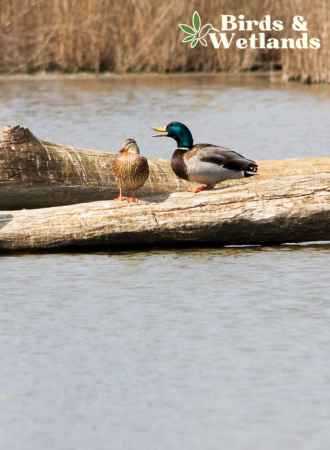
FAQs on Why Do Ducks Wag Their Tails
What does a duck wagging its tail mean?
A duck wagging its tail, or a ‘duck wag’, can signify several situations. Excited ducks often wag their tails during interactions with humans, especially around feeding time. Conversely, tail wagging can serve as a calming mechanism after a stressful situation. During the breeding season in early summer, tail wagging becomes part of the mating ritual along with other mating behaviors. Excessive tail wagging might suggest illness in ducks.
How can you tell if ducks are happy?
Happy ducks exhibit certain behaviors. They’re usually seen quacking, feeding well, and interacting positively with other ducks. Many duck owners believe that tail wagging, especially during human interactions, indicates a good mood. However, it’s important to remember that ducks are semi-aquatic birds with unique behaviors.
What does it mean when a duck shakes its head?
A duck shaking its head, a shaking motion, often coupled with ‘head pumping’, is part of the mating behaviors observed in ducks, especially male mallards, to woo females. This behavior is somewhat less typical outside the breeding season. However, head shaking, like other behaviors, can also be a response to excess water droplets or a stressful situation.
What type of duck wags its tail?
Tail wagging is common in many duck species, both domestic and wild. Domestic breeds like Muscovy and Pekin ducks are known for this behavior, especially in response to a familiar face. Wild ducks also display this behavior, often as part of their mating ritual or after a stressful encounter.
Are ducks friendly to humans?
Ducks can be friendly towards humans, especially domestic ducks that associate humans with feeding time. Many duck owners report friendly and interactive behaviors. However, wild ducks are usually less comfortable around humans. Their responses can vary based on their previous experiences with humans.
What might excessive tail wagging in ducks indicate about their health?
When you observe illness ducks excessively wagging their tails, it may be indicative of a condition known as ‘wet feather’. This illness can occur when ducks are exposed to too much water for prolonged periods, preventing their feathers from sufficiently drying off. This condition can potentially harm a duck’s health by compromising their feathers’ natural waterproofing capabilities.


